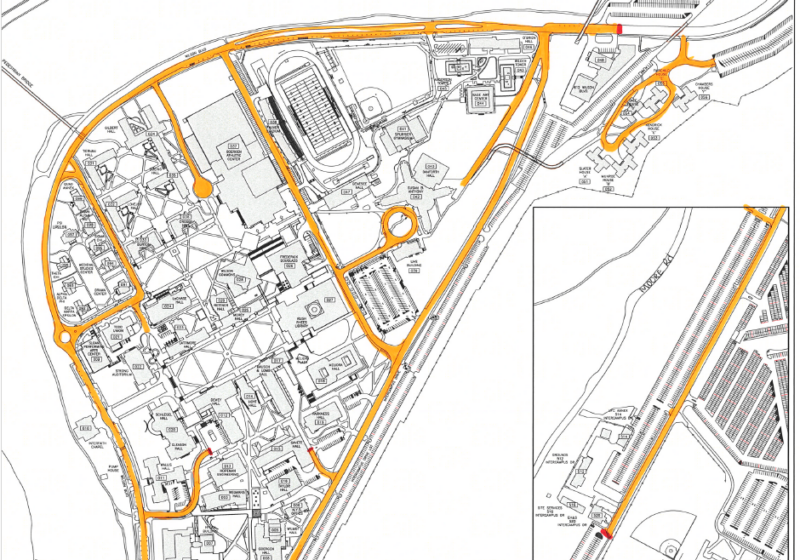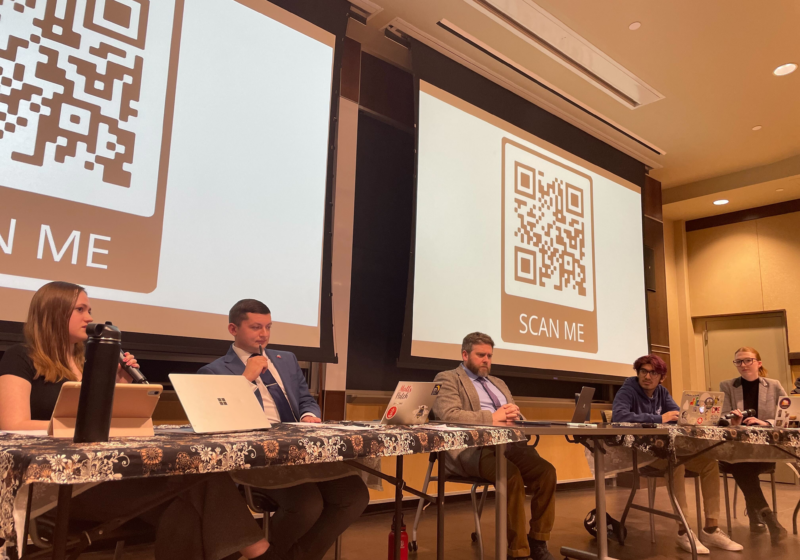The Memorial Art Gallery’s decision to hire controversial artist Tom Otterness for a major sculpture project has drawn outrage and protests from MAG members and the Rochester community.
Otterness, 59, is a renowned Brooklyn-based artist who has been commissioned for elaborate public sculptures in major cities around the world. However, his career has long been haunted by what he calls an “indefensible act” from his past. In 1977, when Otterness was a 25-year-old struggling artist, he adopted a rescue dog from a shelter, chained it to a fence and shot it to death — while filming the entire process. The result was a looped video piece Otterness titled “Shot Dog Film.”
He was never prosecuted or punished for the incident, but he has repeatedly apologized for his actions, saying it was a mistake that arose from his “profound emotional turmoil and despair” at the time.
Last year, the MAG selected Otterness as a major contributor for a new sculpture park, which is planned to commemorate the gallery’s centennial anniversary in 2013 and has an estimated cost of $1 million. The project, which will be at the corner of University Avenue and South Goodman Street, will be a playful gateway to the museum, capitalizing on Otterness’ signature “cartoony” style.
According to Patti Giordano, the MAG’s Marketing and Communications Director, over 50 artists were evaluated for the project, and Otterness was unanimously chosen by the arts selection subcommittee for his “expertise in the field of public art at a national and international level.” The decision was announced over 18 months ago and initially drew “a small negative response,” according to Giordano.
But the issue has now resurfaced thanks to an international animal rights group, In Defense of Animals, which has targeted Otterness and his recent projects across the country. After the group started protesting Otterness’ MAG commission last month, the gallery has encountered more severe backlash.
On Monday, Oct. 3, Animal Rights Advocates of Upstate New York organized what they defined as a vigil, rather than a protest, outside the MAG. Approximately 30 people attended in remembrance of the dog that was killed in “Shot Dog Film.”
Those gathered wielded a number of placards showcasing their distaste for MAG’s choice of artist, some with simple lettering and others with elaborate depictions of the dog in the video. They also read poetry aloud and passed around a petition for Otterness to donate at least half of his proceeds to local animal rights organizations to authenticate his apologies.
“If [Otterness] can put his money where his mouth is, I think there’s a chance for some healing [in] our community and to benefit the animals,” Lois Baum, President of Animal Rights Advocates of Upstate New York, said. “[‘Shot Dog Film’] is a self-earned stain on his reputation.”
Her husband Greg Baum, vice president and treasurer of Animal Rights Advocates of Upstate New York, said that even though Otterness has apologized, he believes that he needs demonstrate his remorse with more “concrete” actions.
In an official statement, MAG director Grant Holcomb said the gallery’s officials were aware of the “regrettable incident” from Otterness’ past before hiring him, but that Otterness had “addressed [the MAG’s] concerns and has publicly and unqualifiedly apologized for an indefensible decision that he made many, many years ago.” Giordano added that “no person at [the] MAG condones what Tom Otterness did,” and that this controversy “is an issue of forgiveness.”
According to Giordano, three people have cancelled their MAG memberships in response to Otterness’ commission, while several others have threatened to do so or said they will not support the Gallery’s future events.
Megan Haley, a homeowner in the Park Avenue area of the city, mailed her membership card back to the MAG in response to the commission, along with a letter warning the Gallery that “the long term negative impact of working with Mr. Otterness may far outweigh any benefits.”
“The Rochester community needs to think very seriously about whether or not a controversial artist with a violent past is the type of individual who we want to artistically represent us,” she said.
On the UR campus, some students have expressed a similar outrage over Otterness and his MAG commission.
“There are certain things you can be forgiven for doing because you were young, and [“Shot Dog Film”] is not one of them,” junior Hannah Weems said. “Killing a dog for art is not acceptable.”
Junior Leah Conant echoed the sentiment that Otterness’ age at the time should not be a factor in assessing his actions.
“He knows right from wrong, [and] he has a conscience,” she said. “Yeah, he apologized for it, but he still did it.”
She added that, since Otterness receives so much publicity over “Shot Dog Film” and is seeking forgiveness, he should consider donating some of the profits from his projects to animal rights organizations.
Other students, however, are willing to look past Otterness’ history.
“I’m almost inclined to give him a second chance,” junior Jillian Taylor said. “What he did is horrible, of course, but he’s apologized for it, and it was almost 40 years ago. I mean, he’s an artist. They’re all weird.”
Sophomore Jonathan Johnson said that the primary concern should be whether Otterness is “the right person for the job,” adding that his actions “say a lot about his personal character but not about his professional character, which is what really matters.”
Otterness’ past has been a subject of controversy for many years, but due to continued protests from organizations like In Defense of Animals and PETA, he has encountered particular difficulty throughout 2011. Earlier this year, he lost a $750,000 commission for a sculpture at the New York Public Library’s Battery Park Branch following protests from animal rights groups and community members. Last month, Otterness had two lucrative projects in San Francisco cancelled, including a $750,000 commission for a sculpture in the city’s Central Subway, which was personally halted by San Francisco Mayor Ed Lee.
These projects were to be financed by taxpayer dollars, whereas the MAG sculpture will be privately funded by the Maurice R. and Maxine B. Forman Fund. Haley said that this funding is an essential issue to consider in the discussion.
“Is it really a fitting tribute to [the Formans] to posthumously associate them with a controversial artist known for his violent past?” she asked. “Would the Formans have wanted their lasting legacy to be a project that was offensive to many residents of their beloved city?”
Despite the uproar over Otterness’ commission, the MAG is still planning to continue the project with him, but is willing to consider the issues it has raised.
“We [will] continue to work to find a solution that will bring some measure of reconciliation to both sides of this controversy,” Giordano said. “We don’t know what that will look like yet, but are working with the community and the artist to explore all options.”
Additional reporting by Melissa Goldin, class of 2013.
Silverstein is a member of the class of 2013.






